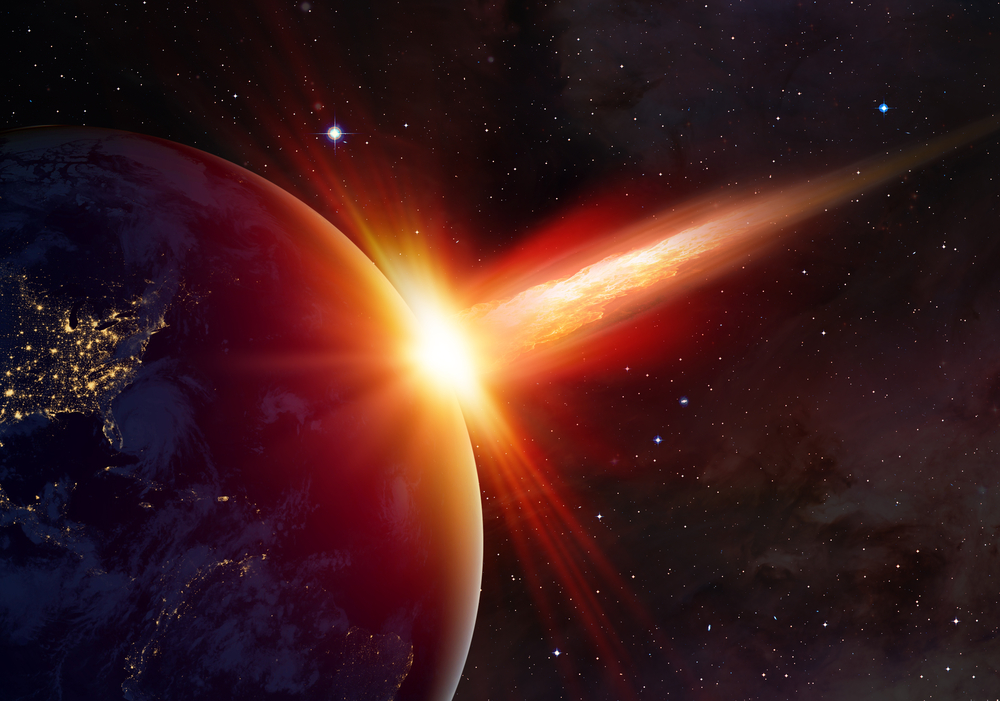Scientists at the US space agency NASA has warned of a potentially hazardous asteroid that might create havoc on Earth and bring apocalypse. The asteroid that measures over 1.1 km in diameter will fly past Earth on February 4 at a very close distance, but chances are there that the celestial object might get trapped in Earth’s gravitational pull and change its trajectory towards our planet.
Named as 2002 AJ129, the asteroid larger than Burj Khalifa will fly past at a distance of 2.6 million miles or 4.2 million km which is nearly ten times the distance between the Earth and the Moon. The asteroid is orbiting at a speed of 76,000mph (34 km/s) making it approximately 16 times faster than the world’s quickest manned aircraft, which is the hypersonic North American X-15, reaching speeds close to 4,520mph (7,300km/h).
While assuring people about safe passage of asteroid, Paul Chodas, Manager, Center for Near-Earth Object Studies at the Jet Propulsion Laboratory, NASA, in California said: “We have been tracking this asteroid for over 14 years and know its orbit very accurately.”
The asteroid, despite having no chances of a collision is termed as ‘potentially hazardous’ because its orbit falls within 4,600,000 miles (7,403,00km) of our planet, less than which is hazardous and pretty close in space context. We expect the closest approach of the asteroid with Earth on February 4, 2018, at 4.30 pm EST.
If the 2002 AJ129 asteroid were to collide with earth, it would wreak havoc by starting a mini-ice age, causing the average temperature of the world drop by up to 8°C. It would create a severe global impact, leaving the planet barren, dark and cold, according to some studies conducted in 2016.
The researchers and astronomers at NASA are using their advanced equipment and specialized telescopes to learn more about the shape, rotation speed, size, and internal components of the 2002 AJ129 asteroid. They are also working at developing a specialized refrigerator-sized spacecraft, which is capable of preventing asteroids from colliding with Earth by altering their orbits potentially. Such a device is scheduled for testing on a small, non-hazardous asteroid in 2024.
The technology as mentioned above is dubbed Double Asteroid Redirection Test (DART) and uses what is known as a kinetic impactor technique, striking with the asteroid to shift its orbit, making it the first ever attempt for asteroid deflection for planetary defense.
In 2016, FEMA Administrator Craig Fugate said, “it is critical to exercise these kinds of low- probability but high-consequence disaster scenarios,” after one such planning session. He further added that we will be better prepared to respond in such an event by working through our emergency response plans now.
Meteor strikes are a common phenomenon as the space rocks crash into Earth frequently but cause no significant harm to us. The reason behind it is the natural defense of Earth, as the meteors usually burn out entirely or to a significantly lesser size before reaching the surface of the planet. On the contrary, a meteorite reportedly fell in Russia hurting approximately 500 people overnight back in 2013. The video-evidences of such incidences can be commonly found on popular video sharing platforms including Youtube.
